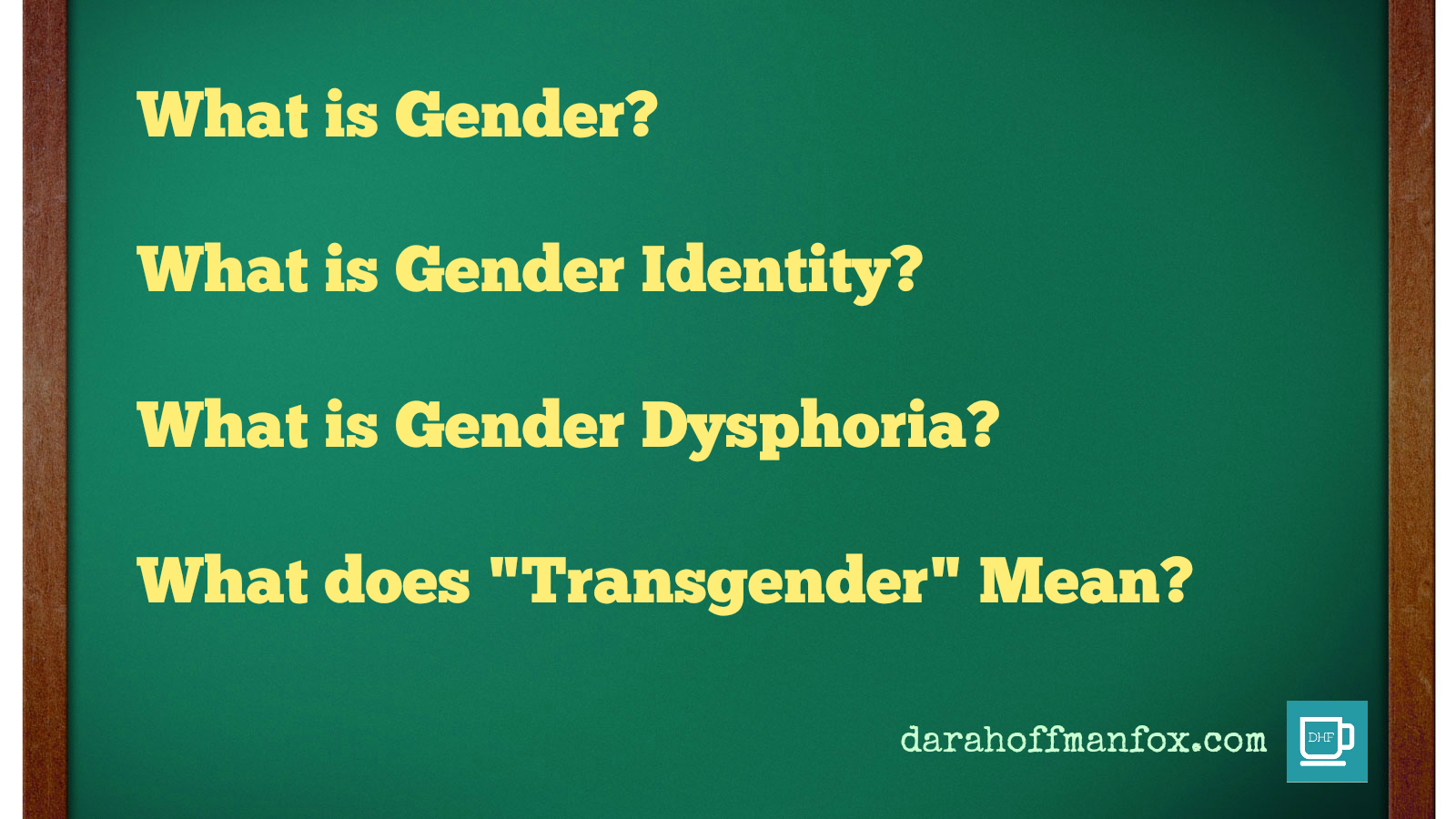5 Things You Can Do to Promote Transgender Awareness
Before we get too far into this post I want to make it clear that I am directing this towards those readers out there who are cisgender. Meaning you do not consider yourself to be nor identity yourself as transgender. The reason being is that those who are transgender are living examples of Transgender Awareness. (However, to my trans readers out there, please feel free to forward this on to the cisgender persons in your life!)
Fair, respectful, and compassionate treatment of the transgender population is not going to happen in our country until more cisgender people step up to help educate others on what it means for someone to be transgender, what challenges they experience, and in what ways we can be of support to them. Whether it’s education given to one person at a time or given to the masses, it all makes a difference.
The inspiration for writing this post is November being Transgender Awareness Month. But, just as with any other “awareness” month, week, or day it is moreso a launching pad for getting people’s attention about something they don’t normally spend time thinking about. Promoting transgender awareness is something that needs to happen every day, not just in November.
Here are five things you can do to promote transgender awareness. Go ahead, give even one of these a try. Being a part of making positive change for an oppressed population in our country is deeply gratifying, and will be remembered for years to come.
1. Find Ways to Explain to Others What It’s Like to be Transgender
There are a lot of different ways people try to explain to others what it means to be transgender. I’d love to gather all of those ideas at some point and publish them because you never know what particular example will finally get someone to say, “Oh, wow, I finally get it!”
I went to a workshop earlier this year given by Kaiser Permanente, and in attendance were mental health and medical professionals who begin working more often with transgender patients, now that Kaiser will be offering coverage for transgender health care in Colorado. They conducted an exercise where they had everyone write on a sticker a name that was the opposite gender of the one they identify as. We were then told to walk around the room with this sticker on and call each other by that name, as well as referring to each other by “he” or “she,” depending on what the name was, and treating them like that gender.
I was struck by how many people shared afterwards that this was an incredibly difficult exercise for them to do. That by being able to actually feel what it was like to be misgendered and seen as someone they were not, they were able to empathize with someone who is transgender.
I had an FtM client who told me he explains it to people this way: “Imagine you were told you had to wear a Nazi uniform everywhere you went, and you could never take it off.”
One more example for you… Some people have no idea that being transgender is a disconnect between the brain’s sense of gender and the anatomy they were born with, and instead think it’s a choice, a “whim,” or a preference. Lately I’ve been using the approach of, “Being transgender (to the extent that one needs to transition to the gender they were not assigned at birth) means they suffer from Gender Dysphoria. This is a medical condition, a birth defect, that causes severe mental and emotional distress. The condition is treated through both medical and social means.”
Let me know if you have any other ideas as to how to increase a person’s understanding and compassion for the transgender person’s point of view!
2. Post Information on Your Facebook Page for Your Entire Social Network to See.
You may think that folks in your social network won’t pay attention to what you put out there, when it comes to transgender awareness. But I’m here to tell you from experience you will be surprised by just how many people it will reach and affect. Over the past year I have posted transgender-related information on at least a weekly basis on my Facebook wall and, in turn, receive both public and private messages from people letting me know how the information has impacted them.
Some have said they have a trans relative or friend and had no idea how much they didn’t know about being transgender until they read my posts. Others have said it made them examine the gender binary system our society functions under. I’ve even had a few people question me suspiciously on what I was posting and, through an open dialogue, they were able to gain new insight they hadn’t had before.
So, where can you get articles, images, blog posts, etc. to post on your page? For starters, go to the following Facebook pages and “like” them, so their updates will appear in your News Feed. You can then “share” the posts that you want your social network to see:
Conversations with a Gender Therapist (of course!)
Matt Kailey’s Tranifesto
Transadvocate
Transition Transmission
TGForum
You’ll come across more as you begin to pay attention to where the information is coming from. You can do the same with your Twitter account, Tumblr, Linked In, Google+, Pinterest… The possibilities are nearly endless nowadays!
3. Speak Up.
This is important to do whether someone says something innocently incorrect about someone transgender or if someone is obviously being a bully.
Your approach can be, at first, similar in both circumstances, because it can be hard to initially tell which category they fall into. A polite but confident interjection, such as “Uh, actually Carly doesn’t identify as a male anymore, she’s a female.”
If the person genuinely listens and corrects themselves then go ahead and move on, so as to reduce any embarrassment or awkwardness they could be experiencing. If it’s the parent, spouse or other family member of someone who is trans and they express that they are struggling with using the correct pronouns, that’s one thing.
However, if they continue to speak in such a way that indicates they are doing it on purpose to be mean, then you have some choices to make.
It can be scary to stand up to a bully, so finding your own unique way of doing so is important. If you are comfortable with confrontation, then by all means go forth and do so. Maybe you are more inclined to use reason and logic. Or maybe simply saying, “Just so you know, you’re being a bully,” and walking away is your style. But please, do something.
I have a trans female colleague who, in her graduate level college class, was continually called “he” by the teacher, even after she explained to him how much it hurts her when he does that. Not a single student in the class stood up for her.
Bullying doesn’t just happen in our kids’ schools. Grownups are just as guilty of it as well.
*Update 11/9/13: A reader made a great point in that speaking up for your trans friend in the presence of someone who doesn’t yet know they are trans can actually make the situation worse. It’s as simple as checking in with them to see where they are at, in terms of being “out” and to whom they are out to.
4. Take the Extra Step for Your Transgender Family Members, Friends, and Colleagues
I know, a lot of you will say you don’t know someone who is openly transgender. Trust me, some day you will.
For those of you who already know someone transgender, I found this bit of advice from blogger Samantha Allen that I just had to quote directly from her post 7 Ways to be a Trans Ally:
“Use Your Amazing Cisgender Powers for Good.”
She goes on to say,
While I work on my female voice, you can manage difficult customer service interactions for me. You can prepare a server to use appropriate pronouns by saying, ‘I’ll have a beer and she’ll have a…’ See how that works? Clever, right?
Take me to the bathroom with you. Please. It’s scary alone. Shield me from stares. Yell at people who are rude and correct people who use the wrong words. Realize that you’re like a god to me and use your powers for good.
If you’re not sure how you can help, go ahead and ask. Every transgender person is a unique individual. Some of them may thank you for the offer but say they can handle it themselves. Others will want your help reminding co-workers of their proper pronoun. Others will appreciate you sticking by them during their transition while others make their way out of their life.
Really, it would take only a few moments of your time, but in the end it can make a world of difference to someone who is transgender.
5. Show Your Support at a Transgender Day of Remembrance Event
Transgender Day of Remembrance (TDOR), which originated in 1998, is an annual observance on November 20th that honors the memory of those whose lives were lost in acts of anti-transgender violence. You can find where your nearest TDOR event is by going to www.transgenderdor.org.
Not only is this a way to show your support of the transgender community, but also an opportunity to expand your understanding of the experience. It may be difficult to sit through the reading of the names of all of the people who died this year due to anti-transgender violence, but becoming emotional about of the realities of what this population faces may be just what you need.
Homework Assignment
All of the above.






5 things you can do to support a transgendered human being… | Charissa's Grace Notes
November 8, 2013 at 6:54 PM[…] 11/08/2013 by Dara Hoffman-Fox Leave a Comment […]
prayerbeads2012
November 10, 2013 at 4:30 AMThank you. I am the cis gender spouse of a trans sexual man. David Weekley http://www.shermanswilderness.org David transitioned 40 years ago.
Dara Hoffman-Fox
November 13, 2013 at 10:50 AMThank you for reading! I enjoyed your husband’s website, the work he does and your support of it is crucial to the foreword momentum of transgender awareness.
Trans* and Feminist Friendly Gender Resources
November 21, 2013 at 12:42 PM[…] Conversations with a Gender Therapist: 5 Things You Can Do to Promote Transgender Awareness: http://conversations-with-a-gender-therapist.com/5-things-can-promote-transgender-awareness/ […]